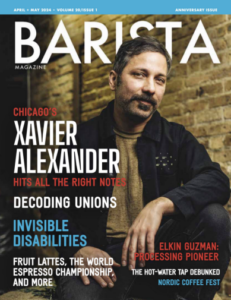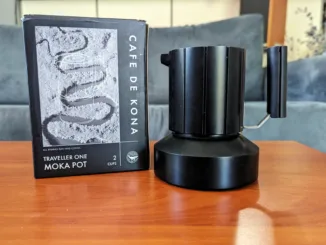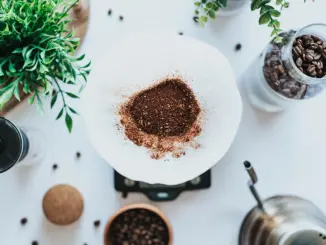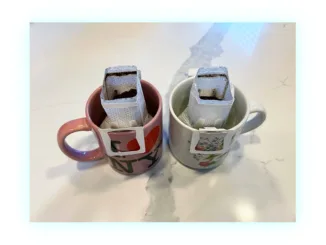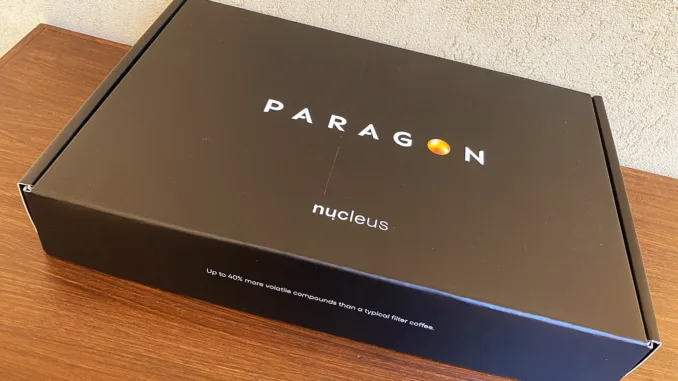
The new Paragon chilling rocks from Nucleus are built to enhance the flavor compound of a poured coffee. We tried them out.
BY TANYA NANETTI
SENIOR ONLINE CORRESPONDENT
Photos by Tanya Nanetti
I first came across Paragon during my trip to South Korea not long ago. We were drinking a flat white at Requirement Coffee Brewers in downtown Busan when my companion noticed that Felix, the owner and barista, was starting to brew coffee by hand using an unusual stand for his dripper.
Intrigued, I approached him to learn more.
“Are you familiar with Sasa Sestic and his Nucleus Coffee Tools?“ he asked me as he began pouring water. “These chilling rocks—the Paragon—are one of their most recent discoveries.“
Of course I knew Sasa, and I had been a big fan of Nucleus’ NCD distributor since forever, but this was the first time I had heard of a pourover brewed on a refrigerated metal sphere, so I asked Felix to explain a few things about this new-to-me technology. He briefly explained how, by brewing the classic hand-drip over the chilled Paragon rocks, it is possible to achieve a final cup with, among other things, a greater aroma and cleaner body.
One sip of coffee—a heavenly, flowery Colombian Gesha —and I was convinced: I definitely wanted to find a Paragon and start experimenting a bit with the wonders of this frozen technology.
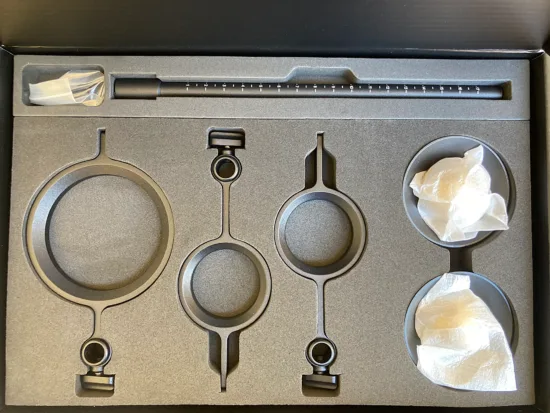
Setting Up the Paragon at Home
Once we got home, it was finally time to try the Paragon to brew a couple of my favorite coffees and to learn more about this new and exciting technique, comparing the final cups of my classic recipe with and without the Paragon.
Paragon comes in an elegant, all-black, minimalist package. The two simple inscriptions on the box are enough to pique interest. “Up to 40% more volatile compounds than a typical filter coffee,“ promises the short sentence on the opening lid, while a longer paragraph on the side explains that the Paragon “was created in collaboration with Zurich University of Applied Science (ZHAW) after researching the effect of temperature on volatile aroma compounds preservation and the resulting sensory flavor outcomes in coffee.“
Once opened, it looked more like something out of a chemistry lab than a coffee tool, with a series of dark metal components to assemble (a quick process that takes only a few minutes to find the right height to match your favorite brew set) and two golden “rocks“ that, as the instructions suggest, I promptly placed in the freezer to cool.
At a standard freezing temperature of -10 to -20°C, the rocks will be ready in about an hour—just the amount of time I needed to review a couple of introductory videos about Paragon and have a brief chat with a coffee friend from afar, Peace Sakulclanuwat.
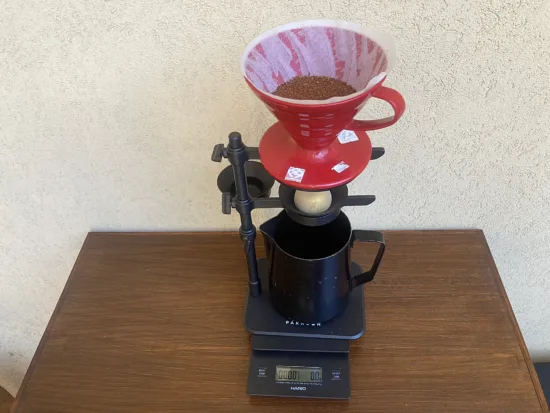
Peace’s Perspective
Peace, a coffee educator at Coffee Project NY and current runner-up at the U.S. Brewers Cup Championship, picked up the Paragon stand and cooling rock from her boss when she was figuring out which brewing methods would work best for her competition coffee.
“My first impression was amazing with the aroma and flavors I got from my coffee,“ Peace says. “The aroma was impressive, super floral, and more pronounced than other brewing methods I had tried before. The flavors were definitely more complex and elegant, especially the sweetness and clarity of the flavors. At that point, convinced of my decision, I asked for sponsorship from Nucleus to participate in the Brewers Cup with Paragon. What I appreciated about the Paragon, besides the good aroma and the complexity and clarity of the flavors, was its innovative approach: I wanted to do something outside my comfort zone and that not many had used before to elevate the experience of my overall cup quality and experience for the judges.“
Peace’s Brew Tips
When I asked Peace for brewing tips with the Paragon, and what improvements could be expected from the resulting cup, she replied: “The perception of aroma will be absolutely improved. You can brew it side by side with other drippers to compare the differences: The aroma of the Paragon will definitely be more intense and floral, and the sweetness will be enhanced in the coffee flavors. Keep in mind, however, that not all coffees are suitable for Paragon: better to use coffees with a strong floral character, complex acidity, and sweetness to get the best out of that coffee. To start, you can use your usual recipe and dripper, paper filter, etc., then taste the coffee and find out what variables you want to change to improve your cup. And experiment with using the cooling stone to dispense all the pours, or just a few pours, to get the best result.“
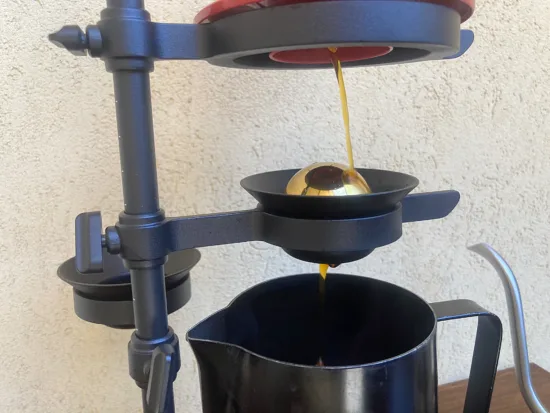
Before I said goodbye, I asked Peace if she could suggest an easy V60 recipe for me to try at home with the new Paragon and my delicious Indonesian beans.
“You can try the recipe I used for my Thai Java and Colombia Maragogype blend at Brewers Cup: 1:14 ratio, 15g coffee and 210g water (94°C or 202°F), divided into four even pours 40 seconds apart, with a total brew time of 2:30. For this specific recipe, I used the cooling stone only for the first two pours to maximize the aroma and flavors of my coffee, but as mentioned you can adjust accordingly to the specific coffee used.“
Time to Brew: Round One
After thanking Peace, it was finally time to start brewing. The rock was properly frozen (once shaken, I didn’t feel the internal gel move), the metal stand was built, my Friedhats washed Rwanda was ground, and the V60 was ready.
I chose to brew the first two cups following my standard recipe: 20g of coffee per 300ml of water (93°C), for a total of five pours, including the blooming.
As suggested by one of Sasa’s tutorials I had seen online, I inserted the Paragon into the routine until I poured about a third of the total amount of water, removing the stone immediately after the second pour and then finishing the brew regularly.
As the first infusion finished, I started the second extraction using exactly the same recipe, but without using the Paragon.
Once both extractions were done, I could begin the comparison.
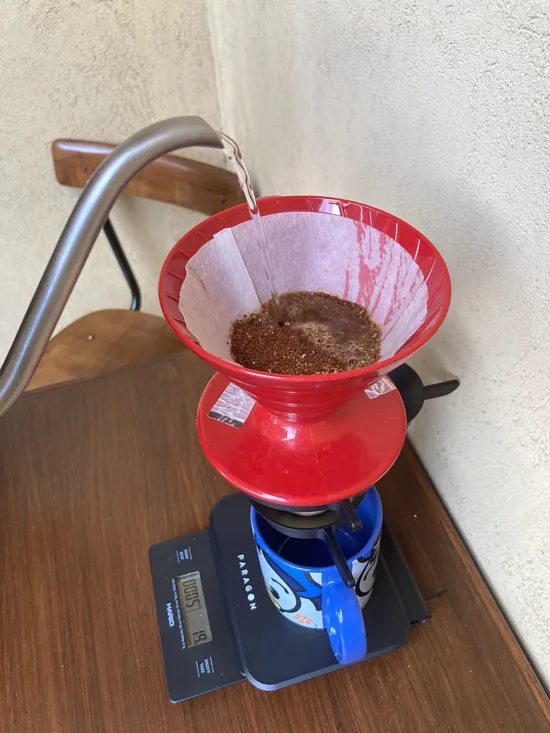
As Peace and Sasa had hinted at, what struck me was the aroma of the Paragon cup: more intense, richer, and slightly acidic. I could appreciate how the flavor of the Paragon brew was also enhanced, with a rounder, sweeter, and cleaner cup.
It was an impressive result, considering that the coffee chosen was not particularly floral or acidic.
Time to Brew: Round Two
After lunch, I brewed one of my favorite coffees from Indonesia, a natural anaerobic, also roasted by Friedhats.
In this session, I decided to replicate Peace’s recipe in its entirety. I also performed a small hack to my filter paper: During the morning brew, I noticed that my filter paper was dragging water sideways, displacing the flow from the center of the server. As suggested in the Paragon user manual, I cut a small corner at the bottom of the filter to facilitate the proper flow of water through the filter, then began my brew.
This time, brewing a coffee that I was used to brewing almost daily, the effect of the Paragon was even more amazing: The coffee aroma was intense and spicy, and the stone fruit and plantain flavors were richer and more distinct.
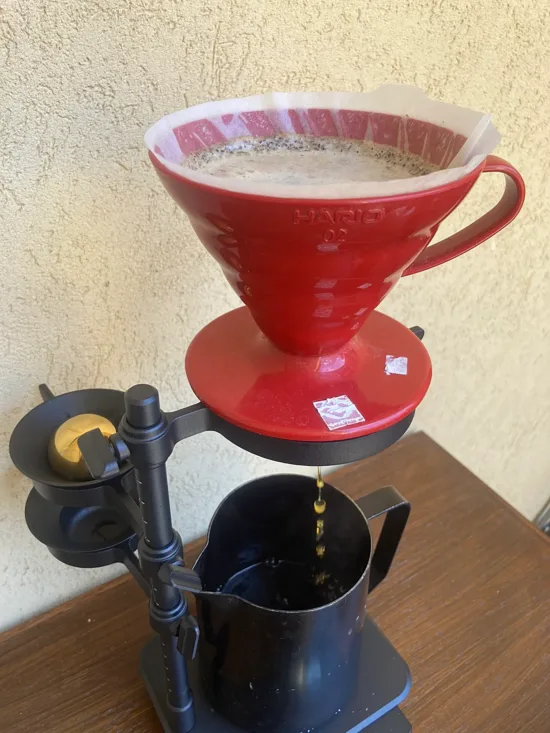
The Takeaway
Although I brewed a couple of coffees without specific floral or acidic notes, as my first day of testing with Paragon came to an end, I could not have been more satisfied.
The metal stand was convenient to assemble and adjust for different coffee machines and servers. The cooling rocks were easy to use and maintain: After each use, I simply wiped them clean by rinsing them with hot or cold water, without detergent, and dried them with a clean cloth before putting them back in the freezer. Moreover, using the Paragon did not necessarily imply a change in my brewing routine. It is an extra step that is easily applicable to your daily brewing, but at the same time gives you the opportunity to experiment with different approaches to brewing, depending on the specific coffee you choose.
I look forward to the delivery of my next super-light and floral Gesha to explore the potential of the Paragon even further.
ABOUT THE AUTHOR
Tanya Nanetti (she/her) is a specialty-coffee barista, a traveler, and a dreamer. When she’s not behind the coffee machine (or visiting some hidden corner of the world), she’s busy writing for Coffee Insurrection, a website about specialty coffee that she’s creating along with her boyfriend.
Subscribe and More!
Out now: It’s the April + May 2024 issue of Barista Magazine! Read it for free with our digital edition. And for more than three years’ worth of issues, visit our digital edition archives here.
You can order a hard copy of the magazine through our online store here, or start a subscription for one year or two.

